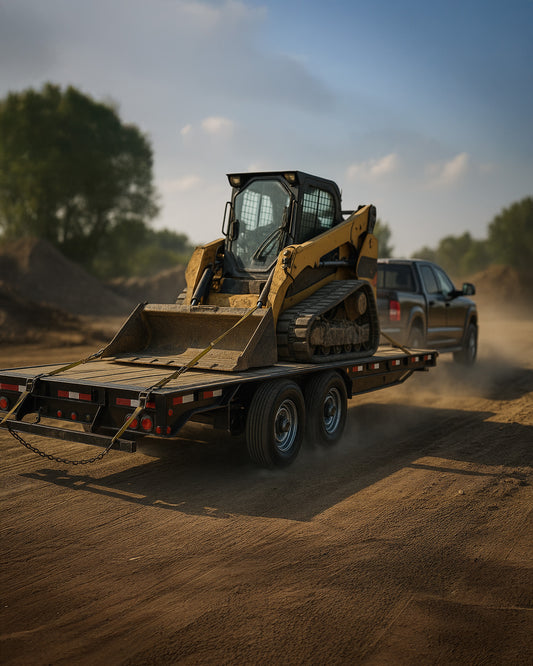

Tire Pressure Monitoring Systems (TPMS) are essential components in modern vehicles, designed to enhance safety and performance. They automatically monitor the pressure of each tire and alert the driver when a tire is significantly under-inflated, which can lead to hazardous driving conditions.
There are two main types of TPMS: direct and indirect. Direct TPMS uses sensors located inside each tire to measure the exact pressure and transmit this information to the vehicle's onboard computer. In contrast, indirect TPMS relies on the vehicle's ABS (Anti-lock Braking System) sensors to detect a drop in tire pressure based on changes in wheel speed.
Here are some key benefits of having a TPMS installed:
- Enhanced Safety: Maintaining proper tire pressure reduces the risk of blowouts and improves vehicle handling.
- Improved Fuel Efficiency: Properly inflated tires can enhance fuel economy, saving you money on gas.
- Prolonged Tire Lifespan: Monitoring tire pressure helps to extend the life of your tires by preventing uneven wear.
As you consider whether can I install a tire pressure monitoring system myself, understanding the functionality and benefits of TPMS is crucial. With the right tools and guidance, you can successfully install a TPMS to keep your trailer safe and efficient.
Tow with peace of mind, knowing that trailerwatchdog is standing guard.
Benefits of Installing TPMS Yourself

Installing a Tire Pressure Monitoring System (TPMS) yourself can offer a range of benefits beyond just the satisfaction of a DIY project. Here are some compelling reasons to consider taking on this task:
- Cost Savings: Hiring a professional to install a TPMS can be expensive. By doing it yourself, you save on labor costs and can invest that money into high-quality components or tools.
- Increased Knowledge: Understanding how your TPMS works and how to maintain it can empower you as a vehicle owner. This knowledge can help you troubleshoot issues and make informed decisions about your trailer care.
- Customization: Installing the system yourself allows you to choose the TPMS that best suits your needs. You can select features such as real-time alerts, smartphone connectivity, and additional sensors for more comprehensive monitoring.
- Convenience: DIY installation gives you the flexibility to work on your own schedule. You can take your time, follow the instructions at your own pace, and avoid the hassle of making an appointment with a shop.
- Sense of Accomplishment: Successfully installing a TPMS is a rewarding experience. It can boost your confidence in handling vehicle maintenance and inspire you to tackle other projects.
By exploring the benefits of installing a TPMS yourself, you not only enhance your trailer's safety but also gain valuable skills and knowledge that can serve you well in the long run.
Essential Tools for DIY TPMS Installation

Embarking on a DIY Tire Pressure Monitoring System (TPMS) installation requires the right tools to ensure a smooth and effective process. Here’s a list of essential tools you'll need:
Protect your trailer
- Basic Hand Tools: A set of common hand tools, including wrenches, screwdrivers, and pliers, will be essential for removing wheel components and securing the TPMS sensors.
- Torque Wrench: This tool is crucial for ensuring that the lug nuts are tightened to the manufacturer’s specifications, which is vital for safety and performance.
- TPMS Sensor Tool: Some systems may require a specialized tool to program or activate the sensors. Check your TPMS manual for specific requirements.
- Air Pressure Gauge: After installation, you’ll need an air pressure gauge to ensure that your tires are inflated to the proper levels, which is critical for the TPMS to function correctly.
- Safety Equipment: Don’t forget to equip yourself with gloves and safety glasses to keep yourself safe during the installation process.
Having these essential tools at your disposal will not only facilitate a successful TPMS installation but also enhance your overall DIY experience. Proper preparation is key to ensuring that your project goes off without a hitch.
Step-by-Step Guide to TPMS Installation

Installing a Tire Pressure Monitoring System (TPMS) can seem daunting, but with a systematic approach, you can successfully complete the task. Follow this step-by-step guide to ensure your DIY installation is efficient and effective:
- Read the Manual: Before starting, carefully read the installation manual that comes with your TPMS. Each system may have specific instructions that are crucial for success.
- Prepare Your Vehicle: Park your vehicle on a flat surface and ensure it’s in gear or in park. Gather all necessary tools and safety equipment before you start.
- Remove the Wheels: Using your wrench or torque wrench, loosen the lug nuts and lift the vehicle using a jack. Remove the wheels carefully.
- Install the TPMS Sensors: Follow the manufacturer’s instructions to attach the TPMS sensors to the valve stems of each tire. Ensure they are securely fastened.
- Reattach the Wheels: Once the sensors are installed, place the wheels back onto the vehicle. Tighten the lug nuts using the torque wrench to the specified torque settings.
- Calibrate the System: Power on the TPMS unit and follow the calibration process as outlined in the manual. This step is essential for the system to accurately monitor tire pressure.
- Test the System: After calibration, check the system by inflating the tires to the recommended pressure. Monitor the readings on the TPMS display to ensure everything is functioning correctly.
By adhering to these steps, you can confidently install your TPMS and enjoy the benefits of enhanced tire safety and performance.
Common Challenges During TPMS Installation
While installing a Tire Pressure Monitoring System (TPMS) can be a rewarding DIY project, several common challenges may arise during the process. Being aware of these potential obstacles can help you navigate them more effectively:
- Incompatible Sensor Types: Different vehicles may require specific TPMS sensor types. Make sure to verify compatibility with your vehicle’s make and model before purchasing.
- Incorrect Installation: Improperly attaching the sensors can lead to malfunction. It’s crucial to follow the manufacturer’s instructions closely to ensure each sensor is positioned correctly on the valve stems.
- Calibration Issues: After installation, calibrating the TPMS is vital for accurate readings. If you skip this step or do it incorrectly, the system may not function properly, leading to false alerts.
- Battery Life of Sensors: Some TPMS sensors come with built-in batteries that have a limited lifespan. Be mindful that you may need to replace sensors after a few years, which can add to maintenance costs.
- Interference from Other Devices: In some cases, interference from other electronic devices in the vehicle can disrupt the TPMS signal. Ensure that your vehicle’s electronic systems do not conflict with the new TPMS.
- Failure to Reset Warning Lights: After installation, some vehicles may require you to reset the TPMS warning lights manually. Refer to your vehicle's manual for instructions on how to do this.
By anticipating these challenges and preparing accordingly, you can streamline your TPMS installation process and enhance your driving experience with greater tire safety.
Maintaining Your Tire Pressure Monitoring System

Once you have successfully installed your Tire Pressure Monitoring System (TPMS), ongoing maintenance is essential to ensure its longevity and effectiveness. Here are some important tips for maintaining your TPMS:
- Regularly Check Sensor Batteries: Many TPMS sensors are battery-operated, and their lifespan can vary. Check the battery status periodically to avoid unexpected failures.
- Monitor Tire Pressure: Even with a TPMS installed, it’s still crucial to manually check tire pressures every month. This practice ensures that your system is providing accurate readings.
- Keep Sensors Clean: Dirt and debris can interfere with sensor performance. Regularly clean the area around the valve stems to prevent any blockage.
- Inspect for Damage: Periodically inspect the sensors and wiring for any signs of damage or wear. Addressing issues early can prevent costly repairs later.
- Stay Informed on Software Updates: Some TPMS systems may require software updates to enhance functionality or fix bugs. Keep an eye on updates from the manufacturer.
- Replace Worn Sensors: If your TPMS is indicating low battery or malfunction, consider replacing the sensors. Worn-out sensors can lead to inaccurate pressure readings, compromising safety.
By taking these maintenance steps, you can ensure that your TPMS continues to protect your tires and enhance your driving experience. Remember, maintaining your trailer's tire health is crucial for safety and performance. Tow with peace of mind, knowing that TrailerWatchdog is standing guard. Visit TrailerWatchdog to learn more about our innovative trailer monitoring solutions.




